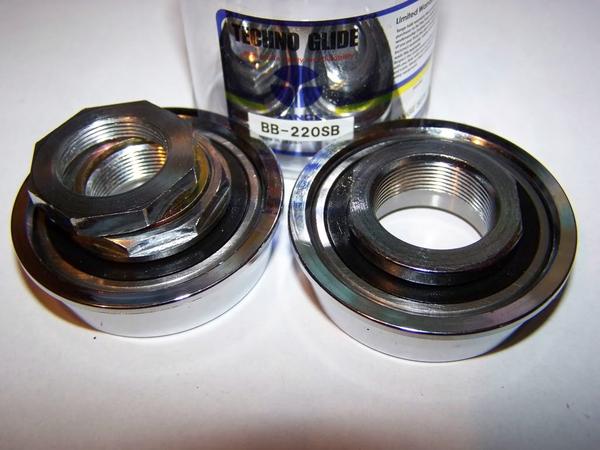I have a couple of nice Trek Mtn. bikes that all have 3 piece cranks that run buttery smooth and feel pretty lightweight (never actually weighed them to see). I also have several cruiser bikes (new and vintage) that use 1 piece cranks that run fairly well and are sturdy. Then I saw that Steve's Skull Skates bike has a nice 1 piece crank and it began to make me wonder what the advantages and disadvantages were for each. Should I look for a better 1 piece crank (is there such a thing, lighter, smoother?) or are 3 piece cranks better? BMX guys seem to prefer 1 piece whereas everyone else seems to like the 3 piece...
What are ya'll's thoughts on this? Advantages/disadvantages for both? :?
What are ya'll's thoughts on this? Advantages/disadvantages for both? :?






















































 in about a month I'll probably be raving about 3pc. cranks after working on a few of em.
in about a month I'll probably be raving about 3pc. cranks after working on a few of em.
